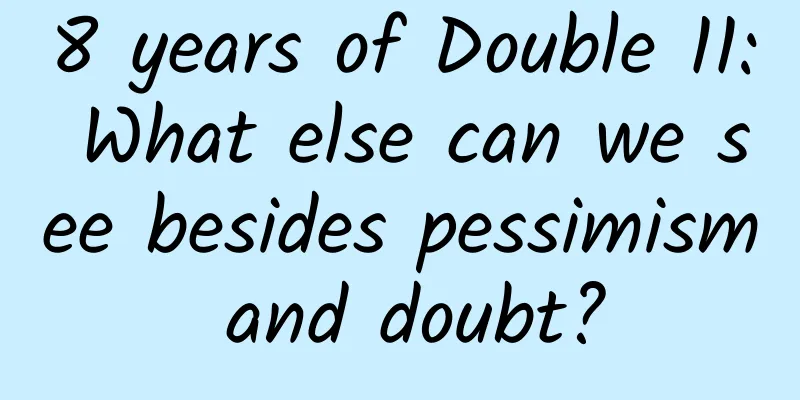Farewell forever! The space "Line Walker" Voyager 1 lost contact, where will it go in the end?

|
Voyager 1 has been traveling alone in deep space for 47 years, but like a kite, the string is still in the hands of scientists on Earth, transmitting data from the distant deep space every day. Therefore, it is still like a child with a mother, tied to it by a thread billions of miles away. After the last photo was sent back in 1990, NASA remotely shut down most of the scientific instruments on board Voyager 1, leaving only a few instruments to collect and send back some real-time data from deep space. The reason for this is that the energy of the RTG (radioisotope thermoelectric generator) on board is insufficient due to the decay of plutonium 238, and the intensity of deep space information transmission decreases quadratically with the increase of distance. In order to keep the line connecting it with the Earth in human hands for a longer time, this has to be done. It is expected that Voyager 1 will eventually lose the ability to operate all its instruments and lose contact with Earth in 2025. The last time scientists on Earth interacted with Voyager was on November 28, 2017, when Voyager 1 had been operating alone in deep space for 40 years, 21.1 billion kilometers away from us. Engineers used more than 39 hours of telecommunications back and forth over the Deep Space Network to wake up Voyager 1's trajectory correction thrusters (TCM), which had been dormant for 37 years, and tested their 10-millisecond pulse positioning capabilities. After this, due to many reasons beyond human control, such as the power supply and deep space network reception of Voyager 1, humans will permanently lose control of Voyager 1. At this time, Voyager 1 is no longer able to send back any photos, but it still flies forward according to the trajectory set by humans, and sends back basic deep space information every second, including speed, heading, operating status, cosmic particle density, etc. It was originally expected that these simple information transmissions could be maintained until 2025, but recently Voyager 1 seems to have been overwhelmed. Although the data sent back is still the binary pattern of computer zeros and ones, it seems to be trapped in a garbled code loop. The management team is convinced that the real scientific exploration data has not been transmitted back. A similar situation occurred last year. NASA engineers spent several months finding the cause and solving the problem. It turned out that a damaged computer on Voyager 1 suddenly started up and sent some strange data back to Earth, occupying the channel and preventing the real scientific exploration data from being sent back. NASA media relations specialist Kara Kefelder said engineers are gathering more information before they can determine the next steps, which could take weeks or even months. In fact, such a problem is not worth making a fuss about, because the design life of this spacecraft is only 4 years. Now it has been running for 46 years in 2019, earning 42 years, which is more than ten times the original life. Can it be repaired this time? It is difficult to predict, because it is more than 24.3 billion kilometers away from the earth. Even if the light speed is 300,000 kilometers per second, it will take more than 45 hours to go back and forth. In addition, the detector itself is about to run out of power, and the deep space network has difficulty receiving weak signals. Will Voyager 1, which loses contact with the Earth in the future, become a piece of waste and its life come to an abrupt end? No, from now on it will become a true human ambassador, and will not obey orders from the emperor, and will continue its expedition in space as a drifting bottle in the universe. Its only mission is to move forward, forward! It will still faithfully follow the course set by humans, carrying the mission given by humans, drifting towards the center of the Milky Way at a speed of about 17 kilometers per second. It will pass through the sun's gravitational field in more than 17,000 years; it will reach the nearest star system, Proxima Centauri, in more than 74,000 years; and it will drift past the center of the Milky Way in 458 million years. If it is not swallowed by the black hole with a mass of 4.2 million suns in the center of the Milky Way, it will keep drifting. Some friends may say that Voyager 1 cannot exist in space for so long and would have been annihilated long ago; or that it cannot keep floating at this speed. This statement is not scientific, because there are two conditions in space that allow Voyager 1 to have an extremely long life and its speed will not decay, that is, extreme vacuum and no gravity. Scientists believe that unless Voyager 1 encounters an accident such as a meteorite collision, it will drift forever in space. A billion years later, the golden record and diamond needle it carries will still be as intact as new. If it is captured by aliens and they are smart enough to decode it, they will be able to learn everything about the Earth from the record, including the calls of various animals in the world, human language and singing, the crying of a newborn baby and the scene of a Chinese family eating together. Aliens can also know where the spacecraft departed from in the Milky Way and how many years it has been drifting in space. This is because Voyager 1 has the coordinates of the location and carries a piece of uranium 238, a radioactive element with a half-life of 4.468 billion years. By testing the inventory of uranium 238, they can know how many years Voyager 1 has been on the journey. The laws of nature are universally applicable in the universe and will become the basic tool for communication among cosmic civilizations. This is the greatness of science. Voyager 1 represents the scientific spirit that humans have been pursuing, and this is its ultimate significance. Perhaps in a few years, the earth will no longer be habitable, and humans will have become extinct. Everything about human civilization will be annihilated on earth over time, but Voyager 1 will still exist. It will serve as a tombstone for human civilization, witnessing the greatness and glory of mankind. With the advancement of human technology, more and more spacecraft will carry human dreams to the stars. Now, five unmanned spacecrafts, including Pioneer 10 and 11, Voyager 1 and 2, and New Horizons, have completed their solar system exploration missions and are flying outside the solar system. These five spacecrafts were launched by NASA. I believe that in the near future, there will be spacecrafts launched by China that will represent mankind to fly into deep space. But the one that has flown the best and farthest so far is Voyager 1, and we sincerely wish it a safe journey. This is an original article from Space-Time Communication. Please respect the author’s copyright. Thank you for your understanding and support. |
>>: Zhao, Qian, Sun, Li, Zhou, Wu, Zheng, Wang...How did these surnames come about?
Recommend
The public fight between Mobike and ofo, and the innovation of Zhihu Live
Long story short, today’s post is an attempt. In ...
Startup products: How to scale up offline?
Recently, I have been learning how startups can s...
The fitness equipment in a park in India was exercising on its own late at night. What was going on? Paranormal activity?
On the 13th, according to Indian media reports, a...
The 4 core elements of Internet activity operation and promotion!
Recently, a friend talked to me about issues rela...
Can this strange bronze "box" take us "directly" to the Shang Dynasty?
Whether it is the previous costume mythological T...
Why is there 416 pages in the Central Academy of Fine Arts' admission letter?
The Central Academy of Fine Arts admission letter...
The secret weapon of operational optimization: Re-understand the power of heat maps! (superior)
In this two-part article, I’ll describe how heatm...
Nuclear contaminated water is discharged into the sea. Can rivers, lakes and reservoirs be spared?
recent, There have been many discussions recently...
How much does it cost to customize a pet mini program on the market in Foshan?
Mini programs provide convenience for publicity a...
How much does it cost to make an educational promotional mini program? How to develop educational WeChat mini-programs?
How much does it cost to make an educational prom...
An article to help you understand Baidu search promotion creativity
What is creativity? Bidding advertising creativit...
Luckin Coffee Marketing Strategy
The ups and downs of life are too fast, it's ...
How much does it cost to join the Zhaotong luggage mini program? What is the price for joining the Zhaotong luggage mini program?
Is it easy to join the Zhaotong luggage mini prog...
How to choose your first programming language based on what you want in life
[[155653]] Life is easy for programmers. There ar...









